In lldb you can quickly find the address by setting a symbolic breakpoint if it's known to the debugger by whatever means:
b symbolname
If you want call a non exported function from a library without a debugger attached there are couple of options but each will not be reliable in the long run:
- Hardcode the offset from an exported library and call exportedSymbol+offset (this will work for a particular library binary version but will likely break for anything else)
- Attempt to search for a binary signature of your nonexported function in the loaded library. (slightly less prone to break but the binary signature might always change)
Perhaps if you provide more detailed context what are you trying achieve better options can be considered.
Update:
Since lldb is somehow aware of the symbol I suspect it's defined in Mach-O LC_SYMTAB load command of your library. To verify that you could inspect your lib binary with tools like MachOView or MachOExplorer . Or Apple's otool or Jonathan Levin's jtool/jtool2 in console.
Here's an example from very 1st symbol entry yielded from LC_SYMTAB in MachOView. This is /usr/lib/dyld binary
 In the example here
In the example here 0x1000 is virtual address. Your library most likely will be 64bit so expect 0x10000000 and above. The actual base gets randomized by ASLR, but you can verify the current value with
sample yourProcess
yourProcess being an executable using the library you're after.
The output should contain:
Binary Images:
0x10566a000 - 0x105dc0fff com.apple.finder (10.14.5 - 1143.5.1) <3B0424E1-647C-3279-8F90-4D374AA4AC0D> /System/Library/CoreServices/Finder.app/Contents/MacOS/Finder
0x1080cb000 - 0x1081356ef dyld (655.1.1) <D3E77331-ACE5-349D-A7CC-433D626D4A5B> /usr/lib/dyld
...
These are the loaded addresses 0x100000000 shifted by ASLR. There might be more nuances how exactly those addresses are chosen for dylibs but you get the idea.
Tbh I've never needed to find such address programmatically but it's definitely doable (as /usr/bin/sample is able to do it).
From here to achieve something practically:
- Parse Mach-o header of your lib binary (check this & this for starters)
- Find
LC_SYMTAB load command
- Find your symbol text based entry and find the virtual address (the red box stuff)
- Calculate ASLR and apply the shift
There is some C Apple API for parsing Mach-O. Also some Python code exists in the wild (being popular among reverse engineering folks).
Hope that helps.
